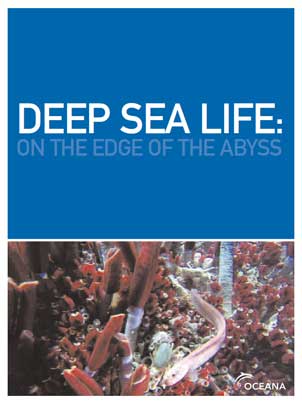Report | May 4, 2010
Deep sea life: On the edge of the abyss
The deep sea is the last great frontier on Earth. For hundreds of years people have pondered, debated and explored the vast depths of the oceans, yet our knowledge of them barely skims the surface. Remarkably, though it is the largest ecosystem on Earth, we have better maps of Mars than we do of our own planet’s seafloor. What little light we have shone on the deep has illuminated life that was old when Rome fell and ancient when Christopher Columbus rediscovered the Americas.
We know that the deep sea is an environment of extremes – high pressures, freezing and superheated water, and sparse food resources. Sunlight fades into almost complete darkness only 600 meters from the surface. The consequent lack of plants fueled debate among scientists as to whether life existed at all in the deep sea until the pioneering voyage of the HMS Challenger (1872-76) provided persuasive evidence to the contrary. It was not until the 1960s that scientists began to realize that the ocean depths are home to a variety of life approaching that of tropical rainforests. Some researchers now suggest that the deep sea is the place on Earth where life began. With improved technologies, scientists are better able to study the deep seas, and they are making dramatic new discoveries almost routinely. We have learned that deep sea corals attain ages best measured in centuries and millennia, and that some of the fish that swim among them are far older than the oldest human. We have discovered unknown life forms and creatures thought extinct since the time of the dinosaurs, and entire ecosystems that get their energy from the center of the Earth rather than the Sun. And yet, we’ve only explored a tiny fraction of the deep oceans.


